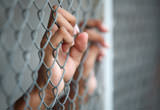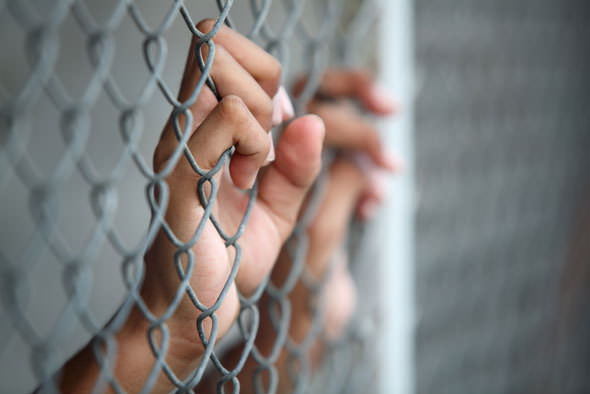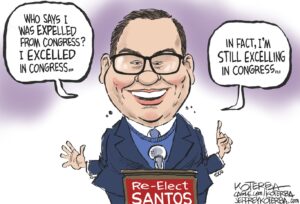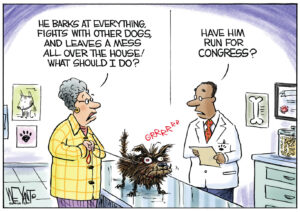Why Has It Taken the Justice Department 10 Years to Act on Rape in Juvenile Hall?
Last week, the Justice Department convened hearings under the Prison Rape Elimination Act to examine the prevalence of rape and sexual abuse in the nation's prisons and juvenile detention centers.
By Joaquin Sapien, ProPublica
|
|
Last week, the Justice Department convened hearings under the Prison Rape Elimination Act to examine the prevalence of rape and sexual abuse in the nation’s prisons and juvenile detention centers. As we’ve reported, the department has found alarming rates of abuse by staff on youngsters in custody. In a 2013 survey of more than 8,700 juveniles housed in 326 facilities across the country, 8 percent said they experienced sex abuse at the hands of the staff supervising them. Twenty percent of those who said they were victimized by staff said it happened on more than 10 occasions. But perhaps the most surprising finding: Nine out of 10 victims were males abused by female staffers.
The prison rape elimination legislation first passed in 2003, but it then took the Justice Department nearly 10 years to study the issue and release rules for prisons and juvenile detention centers to implement. Beginning late last year, auditors contracted by the federal government started inspecting these facilities to make sure that staff members are being trained on how to prevent sexual abuse and that there are effective means to monitor it.
American University law professor Brenda Smith has devoted much of her research to studying the problem, and she and her work helped shape the legislation that addresses it. We talked to her about the difficulty of getting the bill passed, the resistance from the corrections industry, and the psychological damage suffered by young boys who are abused by the women overseeing them. This is an edited transcript of our conversation.
People who have worked in this field know that sexual abuse in prisons has been a problem for decades. Why did it take so long to get Congress and the Justice Department to act?
I think gender has a lot to do with it. When legislation was first proposed by Rep. John Conyers in 1998, it was part of the Violence Against Women Act, and it had to get stripped out so the rest of the bill could pass.
But then, in 2001, Human Rights Watch released a report that really focused on inmate on inmate, male-on-male rape. And I think that because men could identify with sort of the vulnerability of being sexually victimized in custody, you got a lot of traction all of a sudden.
And I also think that there were some other groups that came together that were concerned about it. You had the human rights organizations; you had an organization called Stop Prisoner Rape, now Just Detention International, which was comprised of mainly male survivors. Then you had some conservative groups, like the Catholic Church, the Hudson Institute, basically what they were concerned about was the spread of homosexuality.
I also think that there was concern about 2014 well, frankly, there’s just no other way to say it because it’s actually in the statute 2014 the racial dynamics of sexual victimization in custody: That white men were going to be sexually victimized by black men. So the underpinnings of the legislation were not really that wholesome.
But it was this group of very powerful co-sponsors, Ted Kennedy and Jeff Sessions in the Senate and Frank Wolf and Bobby Scott in the House. And so for some reason it just kind of took off like a bullet. And people like me and others who had been doing this work for a long time thought this legislation was going nowhere. Then the next thing we knew it had passed unanimously with unprecedented funding.
There’s a rising female population among the staffs in juvenile settings. What accounts for that? What challenges does that present?
It’s not that men aren’t qualified; it’s that they often can’t meet the requirements, which require a certain degree of education, no past criminal record, and passing a drug test. Women are more likely to be able to do that.
In New York, Rikers Island is majority female staff, 75 percent of them are African American. And that’s very common in cities.
One of the things that people are still trying to understand is what the harm can be to a boy who has experience of abuse with an older woman in these facilities. What’s the current body of scholarship on female-on-male abuse?
The short of it is that anytime a wrong has happened, you need somebody to acknowledge that something wrong has happened. Just the fact that people can’t wrap their head around the fact that this was something that happened to you that should not have happened to you, that it’s not okay.
One of the biggest harms is that these guys are victims, but they don’t even get a chance to name their victimhood because there is such a huge culture of masculinity, it would be like, why are you complaining about that?
If nobody even recognizes that that’s a problem then there’s not going to be any services, or any education, or any intervention to address it. And because people don’t understand that, then what happens is it deepens the harm.
And as far as the long-term consequences?
Anger, violent behavior, depression, the same thing that happens to all victims, post-traumatic stress, hostility and aggression toward women, all of that is in the literature. Many of them were reared by women, who maybe didn’t protect them, so it solidifies this perception that women are not there for them.
And talk about the consequences for women who actually have been caught violating young boys. How often are you seeing prosecutions? How often are you seeing penalties levied against female abusers of boys?
Well, we’ve been studying this, and this whole problem of sanctions has been there from the beginning. We’ve found about 300 cases total of female-on-male abuse 2013 cases that were reported in the media between 1990 and 2013. About 30 of the cases were related to juveniles. And if I remember correctly, of those 30, there were only seven or nine actual convictions.
But what we’re looking at is how the media characterized what happened, were they characterized as relationships? And did that characterization have an impact on the prosecution or the sanction? I think that’s a huge problem, because the likelihood of there being a sanction is really related to the importance that society places on harm to that victim.
For the most part these women pleaded guilty to things that wouldn’t lead you to believe that this person had any kind of sexual relationship with a youth, so they didn’t even have to register as a sex offender. And more often than not there is nothing about their behavior that would’ve led somebody else in a custodial setting not to hire them again.
And these are just the rare cases where there was some visibility in the media. When you talk about what happens at the facility level, and there’s no coverage, the consequences consist of a termination or a resignation. And what happens is people resign and when they resign, you don’t have to say anything. That means they can easily be hired somewhere else.
Do you see any commonalities among facilities where this seems to be particularly problematic, where there is a particularly high incidence rate?
Overcrowding. And this is true with both juvenile and adult facilities. Overcrowding means there’s an inability to supervise and a scarcity of resources, so you’re going to cut corners somewhere.
Culture is also a huge issue. What is the culture of your facility? First of all, there is the culture of corrections, and then there is the culture of the different shifts that people are on. And it really is an 2018okay, you cover me, I’ll cover you kind of situation.’ And the things that can go on that people feel are acceptable are really, really, really astonishing.
Your support matters…Independent journalism is under threat and overshadowed by heavily funded mainstream media.
You can help level the playing field. Become a member.
Your tax-deductible contribution keeps us digging beneath the headlines to give you thought-provoking, investigative reporting and analysis that unearths what's really happening- without compromise.
Give today to support our courageous, independent journalists.







You need to be a supporter to comment.
There are currently no responses to this article.
Be the first to respond.